Written by Joel Alderfer on March 26, 2021
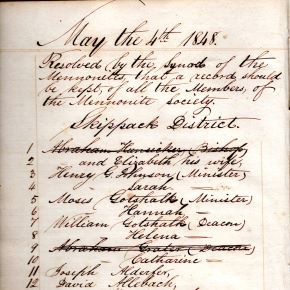
This article was published in the MHEP Newsletter in November 1995, and has been updated to include church records added to the collection since that time.
Researchers at the MHC Historical Library often ask, “Where are the early Mennonite church records?” or “What church records do you have?”
This is not a simple question. First of all, what does the researcher mean by church records? There are membership, baptismal, ministerial, burial records, alms records, property and land records.
I explain that generally,
Continue Reading
Written by Joel Alderfer on May 27, 2020
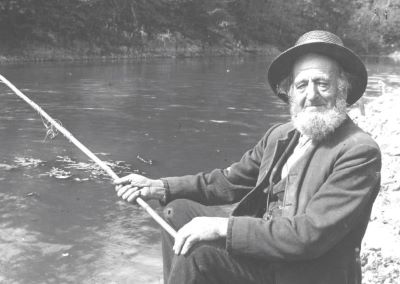
Traditionally, many communities have unusual personalities, or characters, who are remembered and immortalized by stories that are passed down long after their passing. They are people whose colorful lives may not be well documented in written history, but are often remembered in the oral tradition.
I wrote these bios for the MHEP Newsletter in 1995, based on stories collected from older folks, local historians, and my own research. We’re sharing them here in two parts (this week and next), adding a
Continue Reading
Written by Joel Alderfer on April 8, 2020
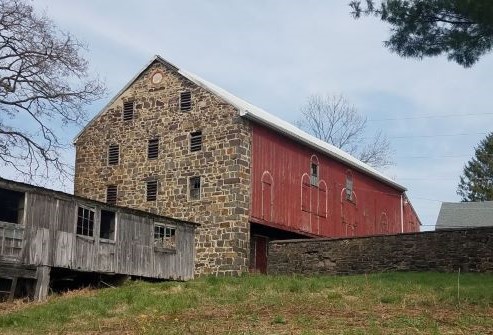
Once in a great while in our collecting work at the Mennonite Heritage Center, we have the unusual opportunity to sort through and select from a multi-generational family collection in its native setting — the very homestead where the objects were either made or acquired, used, passed down and preserved. This is the scenario that developed after I received a phone call last May from the owner of a Moyer family homestead in Salford Township, Montgomery County, inviting me to
Continue Reading
Written by Joel Alderfer on December 10, 2019

Earlier this year, Harold R. and Doneda Clemmer donated a small collection of folk art and a group of deeds and surveys from the family and homestead of his ancestors, Preacher Christian & Barbara Gehman Clemmer, of Hereford Township, Berks County. The Clemmers were members of the Hereford Mennonite congregation, in Bally, PA, where Christian was ordained a preacher in 1842.
We’ll feature some of the folk art and just a selection of the land-related documents from the recent donation in
Continue Reading
Written by Forrest Moyer on January 24, 2019
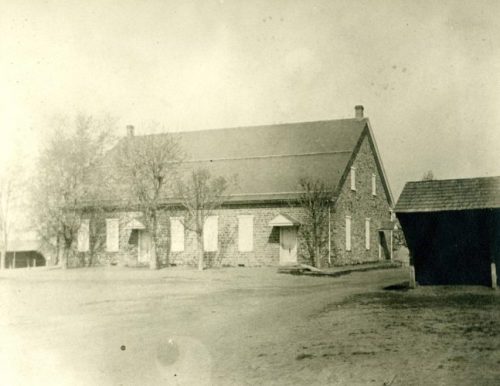
Two weeks ago I posted a story about hospitality as it was experienced in the 1820s in the wilderness of Ohio. Today I’m sharing another article from our Newsletter that touches on the theme of hospitality and the old culture of Franconia Mennonites.
In April 1985, John Ruth transcribed and commented on several notes from a journal of Henry R. Bergey (1843-1925). The article is rich in the color of life as it used to be among local Mennonites, and we’re
Continue Reading
Written by Forrest Moyer on January 26, 2018
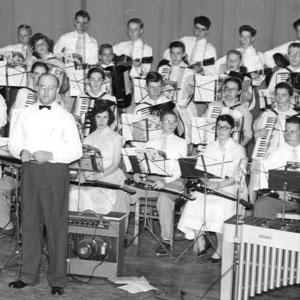
This series of posts highlights families descended from 18th-century Mennonite immigrants to eastern Pennsylvania, in connection with the MHC’s exhibit Opportunity & Conscience: Mennonite Immigration to Pennsylvania, on display through March 31, 2018. The stories reflect the enrichment brought to communities over centuries by the descendants of immigrants.
Immigrant Bishop Felte
There were several Mennonite men named Clemmer, presumably brothers, who settled in Pennsylvania in the early 1700s – Jacob, Christian, Henry and John (Hans), and possibly John Jacob – along with
Continue Reading
Written by Forrest Moyer on October 23, 2017
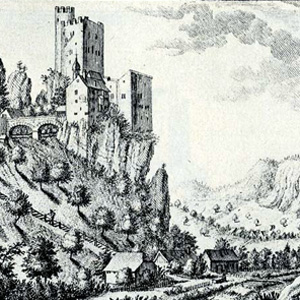
This series of posts highlights families descended from 18th-century Mennonite immigrants to eastern Pennsylvania, in connection with the MHC’s exhibit Opportunity & Conscience: Mennonite Immigration to Pennsylvania, on display through March 31, 2018. The stories reflect the enrichment brought to communities over centuries by the descendants of immigrants.
European background
The Derstine family of eastern Pennsylvania (one branch uses the spelling Derstein) is descended from Michael Dierstein (1712-1777), an immigrant who came to Philadelphia with a group of Mennonites on the ship
Continue Reading
Written by Joel Alderfer on August 17, 2017
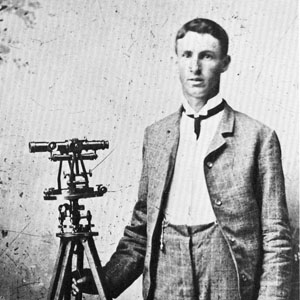
This series of posts highlights families descended from 18th-century Mennonite immigrants to eastern Pennsylvania, in connection with the MHC’s exhibit Opportunity & Conscience: Mennonite Immigration to Pennsylvania, on display through March 31, 2018. The stories reflect the enrichment brought to communities over centuries by the descendants of immigrants.
The Alderfer name is one of those unique to the Mennonite communities of Montgomery and Bucks Counties. The name was not found in other Mennonite settlements, except through later migration and intermarriage. However,
Continue Reading
Written by Forrest Moyer on July 12, 2017
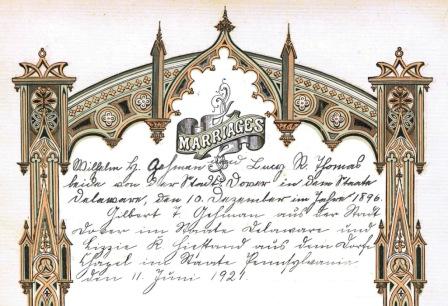
Last year Alma Shelly of North Newton, Kansas donated several family Bible registers that belonged to her late sister-in-law, Griselda Gehman Shelly (1925-2014), wife of Mennonite minister and author Maynard Shelly. The registers document four generations of Griselda’s ancestors, a unique and gifted family of the Berks-Lehigh community.
Griselda Gehman was an only child, born in Newark, Delaware to parents of Pennsylvania Mennonite origin. Her grandfather, William Hiestand Gehman, had moved from Lehigh County, Pennsylvania to the state of Delaware, where
Continue Reading
Written by Forrest Moyer on June 14, 2017
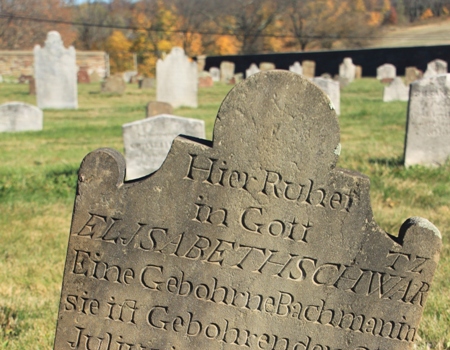
In 2016, the MHC received not one, but two collections of digital photos from local Mennonite cemeteries.
The first contains photos of all gravestones in the Deep Run Mennonite East Cemetery in Bedminster Township, Bucks County. The donor, Daryl W. Rice, shot the photos in 2015. He did an excellent job, selecting a time of day when the sun created the best light for reading inscriptions, and getting down to the level of the stones for a good angle.
Most 18th-century Mennonite
Continue Reading










